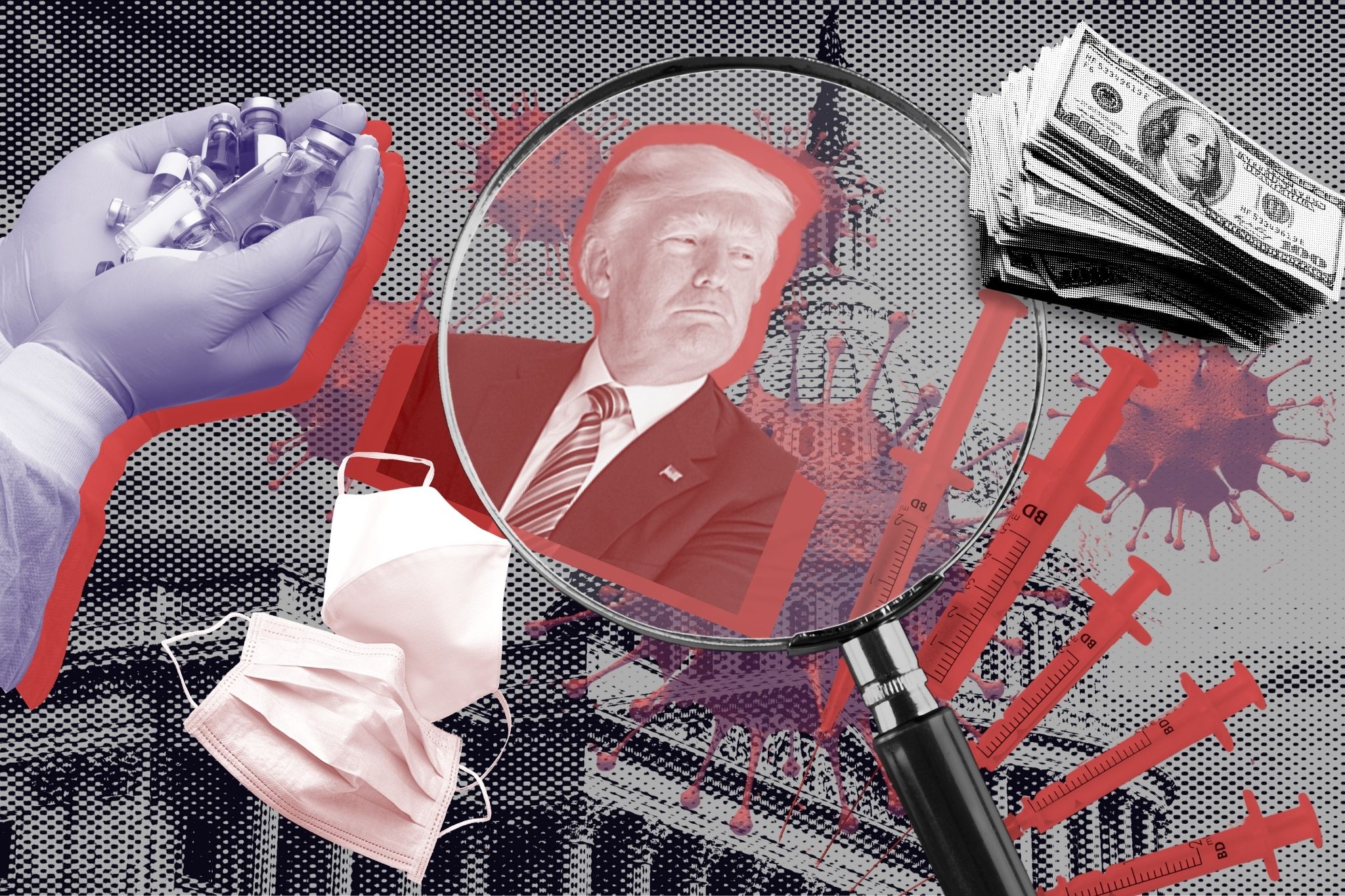One Year of the Coronavirus Pandemic: The Federal Response
From the beginning of the coronavirus pandemic last year, a stumbling federal response exacerbated a once-in-a-lifetime public health crisis.

From the beginning of the coronavirus pandemic last year, a stumbling federal response exacerbated a once-in-a-lifetime public health crisis: The Trump administration resisted creating a unified strategy to provide states with medical equipment or to boost testing capacity, interfered with the key decisions at the nation’s top scientific agencies, and gave special treatment to private companies. In the last year, news outlets, watchdog groups, and federal oversight agencies have investigated these missteps.
Government watchdogs have tracked the federal pandemic response, releasing key reports that shine light on multiple failings.
- In September 2020, the Government Accountability Office released a report that found that the Federal Emergency Management Agency had open requests for millions of gloves, gowns, and respirators — some of which could not be filled until the next year. The report called upon FEMA and the Department of Health and Human Services to develop federal plans to address these gaps.
- In November, the GAO found that leaders of states and territories were still concerned about ongoing shortages of testing and medical supplies. GAO also noted the need for more transparency around the Food and Drug Administration’s scientific reviews of safety and effectiveness to strengthen public confidence in vaccines.
- The GAO released its biennial report on federal “high-risk” issue areas, which included oversight of Covid-19 relief loans and the problems the pandemic posed in the treatment and prevention of substance use disorder, which has increased during the crisis.
- The Pandemic Response Accountability Committee released an updated report in February 2021 about the top challenges facing the federal government’s pandemic response, including preventing and detecting fraud in government programs; protecting the public from coronavirus-related fraud; promoting data transparency and completeness; and ensuring federal workforce safety.
- Throughout the year, the inspectors general at the Department of Veterans Affairs, Department of the Interior, the Small Business Administration, and the Department of Justice reviewed the pandemic response. Read more about those offices’ reports at our Public Documents Tracker.
Former President Donald Trump’s combative relationships with multiple state leaders led to significant breakdowns in state and federal coordination, compounding the problems created by a hands-off approach that left many states competing with one another for help.
- American Oversight received documents from Illinois, Washington state, and Wisconsin that showed state officials struggled to coordinate with the White House and federal agencies in the spring of 2020, when states were in desperate need of personal protective equipment and medical supplies.
- During these early months, congressional delegations from Connecticut, Maine, Massachusetts, and Wisconsin wrote to health agencies and the White House requesting assistance in filling their states’ PPE requests.
- Coordination problems extended into the fall and winter, when states struggled to keep up with changing federal messaging about vaccine distribution and were left out of the loop about key information regarding vaccines. American Oversight received documents from Nevada that showed officials’ confusion about vaccine distribution guidelines that the Trump administration issued in the summer and early fall of 2020.
In the fall, concerns deepened about the politicization of science agencies, including the Centers for Disease Control and Prevention and the FDA.
- The House Select Subcommittee on the Coronavirus Crisis released a majority staff analysis in October that found at least 47 separate incidents of political interference in the administration’s response spanning February through September 2020. The report noted that these incidents impacted every major facet of the public health response and were increasing in number and severity as the presidential election drew nearer.
- The House Select Subcommittee on the Coronavirus Crisis published an interim staff report on Trump’s failure to respond appropriately to the Covid-19 outbreak. The report detailed his repeated downplaying of the crisis and his contradiction of internal White House reports; 60 instances in which political appointees improperly interfered with the public health response; the directing of funding for critical supplies to companies with political connections to the administration; and the administration’s failure to address conflicts of interest in vaccine development.
- The House Select Subcommittee on the Coronavirus Crisis released documents that showed the Trump administration had weakened CDC testing guidance in August 2020 to hide evidence of positive tests while it promoted the country’s “reopening”; manipulated public health information by changing scientific reports that were considered politically damaging to Trump; and pressed the FDA to approve treatments like hydroxychloroquine.
- Accountable.US released a report in October detailing nine months of politicization and misinformation on the part of Trump and his political appointees, including the pressuring and intimidation of career scientists working on the government’s Covid-19 response.
American Oversight, journalists, and watchdog groups also investigated corporate influence on the White House’s and federal government’s pandemic response.
- The Washington Post reported that Wellshire Financial Services — a title-lending company owned by major Trump donor Rod Aycox — received a $25 million low-interest loan from the Federal Reserve’s Main Street Lending program. Wellshire exploited a loophole to secure the funds, since the program’s rules prohibit such lenders from accessing the aid.
- American Oversight obtained documents containing top White House officials’ communications with private companies, illustrating how private-sector representatives had easy access to White House officials, seemingly without having to go through more formal channels.
- We also received documents that showed communications between private companies and top health officials at the CDC and HHS. In one conversation, former Department of Homeland Security Secretary Kirstjen Nielsen emailed then-HHS Secretary Alex Azar to pitch a company that had conducted DNA testing of immigrants at the border, writing that it could assist with Covid-19 testing.
Though Trump is no longer in office, the devastating effects of his administration’s multiple failures in addressing the pandemic will be felt for years. To learn more about the Trump administration’s pandemic response, visit our Oversight Tracker and read more about our investigations.